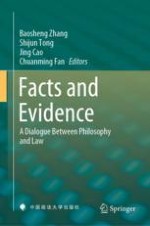2021 | OriginalPaper | Buchkapitel
Providing Evidence: C.A. Coulomb’s “Balance Électrique” and the Culture of French Enlightened Rationality
Aktivieren Sie unsere intelligente Suche, um passende Fachinhalte oder Patente zu finden.
Wählen Sie Textabschnitte aus um mit Künstlicher Intelligenz passenden Patente zu finden. powered by
Markieren Sie Textabschnitte, um KI-gestützt weitere passende Inhalte zu finden. powered by
